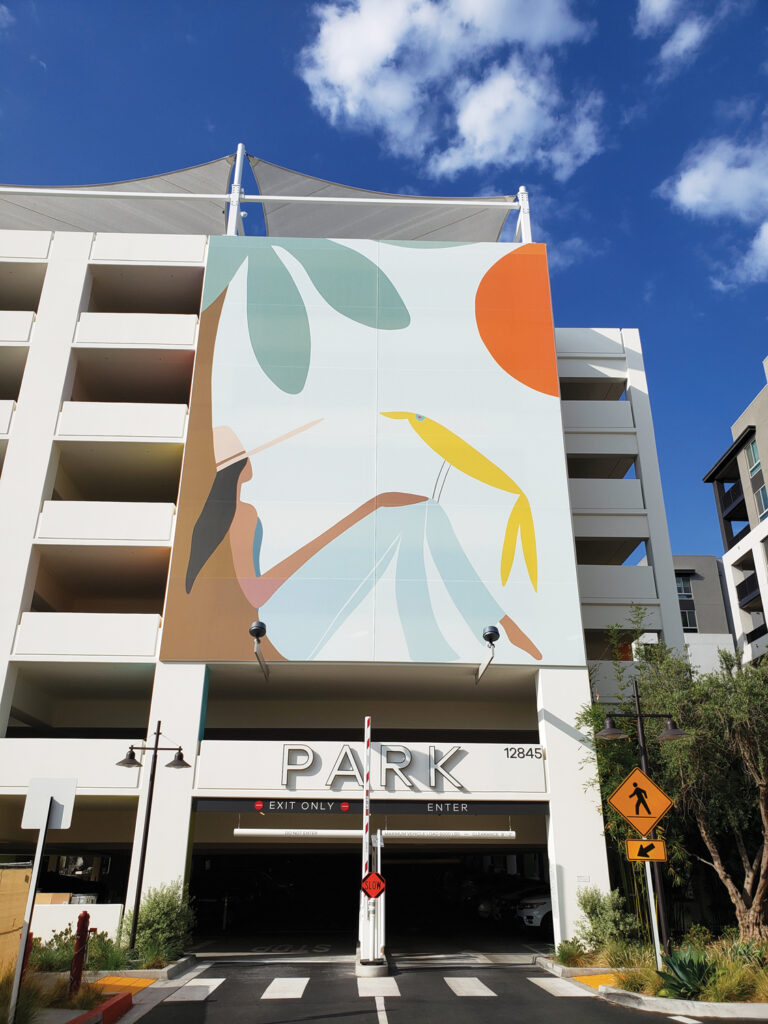
Sustainability, art, better durability and new printing technology are among the trends shaping the exterior fabric graphics market. Companies involved in all facets of this area continue to innovate, meet market demands and introduce new and better features for fabric products and the equipment that produces them.
Developing a more sustainable fabric
For global fabrics manufacturer GALE Pacific, a recent star of the company is Ecobanner by GALE Pacific™, a banner fabric that won a Sustainability Award at the World Out of Home Organization (WOO) Awards in 2024. The award recognizes the collaboration between GALE Pacific and its partners oOh!media and oOh!media’s printing arm, Cactus Imaging, in seeking a solution that meets the increasing demand for sustainable advertising solutions. After approximately six months in development at the Australia facility headquartering the company’s R&D department, Ecobanner made its debut as a 130-meter [427-foot] billboard during the 2023 FIFA Women’s Cup in Sydney.
Elliot Arnup, GALE Pacific’s marketing communications manager (Australia/New Zealand), elaborated on the fabric’s qualities that earned the award.

“Ecobanner is capable of 100% closed-loop recycling,” Arnup says. “Closed-loop recycling is critical to reducing our environmental footprint because it avoids landfills. It creates high-quality recycled material, which can be repurposed back into the same product.” He adds that Ecobanner is PVC free as well as free from lead, phthalates, BPA, BPS and PFAS, which have the potential to harm the environment.
“Unlike the PVC manufacturing process, which produces toxic carcinogens and byproducts, Ecobanner production doesn’t generate hazardous residue like vinyl chloride monomer [VCM], making it a cleaner alternative to PVC,” Arnup says. “We also recycle 100% of the poly waste produced during the manufacturing process.”
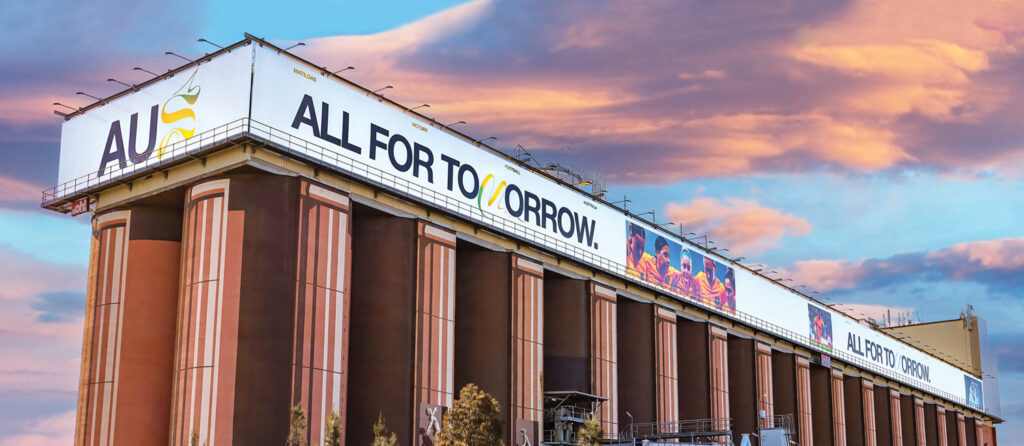
Sustainability doesn’t stop with manufacturing. “Here in Australia, we have worked closely with industry partners, including our recycling partner, Sustainable Plastics Solutions in Victoria, to facilitate a viable option for recycling Ecobanner,” he says. “To enable a closed-loop solution, it’s important to be involved across the supply chain to ensure we get our product back into our manufacturing stream at the quality we need to replace virgin raw materials.”
Arnup touts other advantages of Ecobanner that support business goals along the supply chain: print quality, durability similar to comparable PVC fabrics at up to 50% less weight and a reduction in disposal costs.

GALE Pacific also fosters ties with research organizations and government agencies in Australia to make sustainable products. For example, it has worked with the government and other partners to use its Landmark® grain covers to launch a closed-loop recycling solution for grain tarps in Australia.
Arnup says that discussions with stakeholders outside of Australia has commenced: “As this is a new innovation … we are only now starting to talk to industry partners more globally to see where we can take the concept.”

Embellishing the built environment
It seems that a lot of structures are getting makeovers, and FlexFacades is one of the companies involved in this change.
Paul Snustead, sales director of FlexFacades by Structurflex, says exterior fabric facades are an ever-growing market because of the push to improve the appearance of structures via art. “We work with architects or an owner’s artists on numerous art initiative projects coast to coast,” he says. “More and more municipalities are enforcing city art initiatives where cities will provide certain funds for such projects. And one of the options is providing graphics.”
Recent public housing Kiku Crossing in San Mateo, Calif., integrated fabric graphics, and FlexFacades worked with an art competition to update the Crossing’s unattractive parking garage. Artist Harumo Sato presented the award-winning vision that Structurflex engineered, fabricated and installed.

The company’s solutions come with a 10-year warranty, which stems from what Snustead says is one of the most important innovations in the industry. In the past, UV inks were used to create graphics, but now printing can be done with a clear coat, which means printers can produce more durable graphics. “Previously it was a five-year warranty. Now we can do double that,” he says.
The longer warranty goes to the heart of FlexFacades’ purpose. “We’re all about permanent architectural expression,” Snustead says.
Snustead would like to see progress made in a few areas of the industry, including more fabric meshes with openness factors between 35%–45%. U.S. building codes require a certain openness factor that needs to be considered when doing a project. “It’s been tough,” he says. “I’ve been pushing manufacturers. I do have a few options now in the 50% arena. But right now, there’s not many options in that 35–45 range.”
He also advocates for additional development of silicone-coated fabrics. Silicone, Snustead says, is greener because it does not contain the “nasty” chemicals other materials do. However, silicone attracts dirt, so dirt resistance is important to develop in this area.

Market opportunity for going bigger
Eide Industries Inc., a manufacturer of numerous types of fabric structures, including shade structures, tensioned fabric structures, retractable fabric roof systems and canopy systems, has much to celebrate. Based in Cerritos, Calif., Eide recently marked its 85th anniversary, and in May, the company had its best month in four years for value of new orders per month.
“Eide has weathered many challenges and adapted to many new technologies, with graphics being an integral part of our past, present and on to the future,” says Don Araiza, president of Eide.
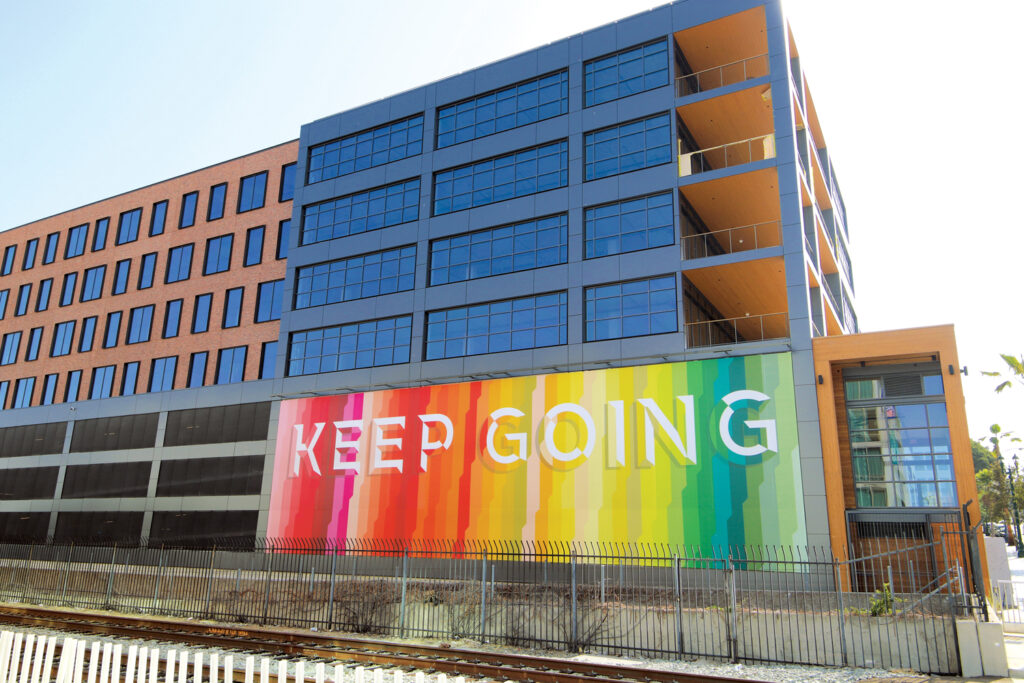
One of its most significant upgrades was the recent purchase of a new digital graphics machine that can print larger formats roll-to-roll, up to 126 inches wide. “This new technology increases the panel size, resulting in fewer seams, increased color sharpness and greater resistance to fading,” he says. “By comparison, our original digital printer has a maximum capacity of 84.5-inch-wide formats.”
Another benefit of the new technology is that the machine prints faster onto mesh fabric, which increases production.
Several considerations drove the decision to purchase the printer, including keeping up with customer demand, taking advantage of the latest technology, increasing production speed and putting the company in a better position to pursue large-format clients.
The equipment also is better for the environment. “The components of the new digital printing machine help the environment by curing with LED lamps, which consume less power than traditional arc lamps,” Araiza notes. “Plus, the new inks are eco-friendly and GREENGUARD certified.”

Concerning the engineering and design division, Araiza says, “We have expanded our design staff to include new employees and added to our software portfolio. We are becoming heavily involved in large projects requiring specific design and engineering as well as project management.”
The graphics applications division also has seen significant changes. “Full-flood digital printing is spiking, with murals, logos and patterns becoming the new norm,” Araiza says. Also, jobs for printing onto backlit acrylic media have increased.
Learning how to use the new equipment has taken time, as has figuring out the best way to integrate this equipment into business offerings.
“Other business-related challenges are the many new laws and reporting data requirements that almost need a single person to keep up with,” Araiza says. “Costs, of course, have had a significant impact on business. Material costs, insurance, facility rent, labor costs, all have had a direct impact on business trends.”
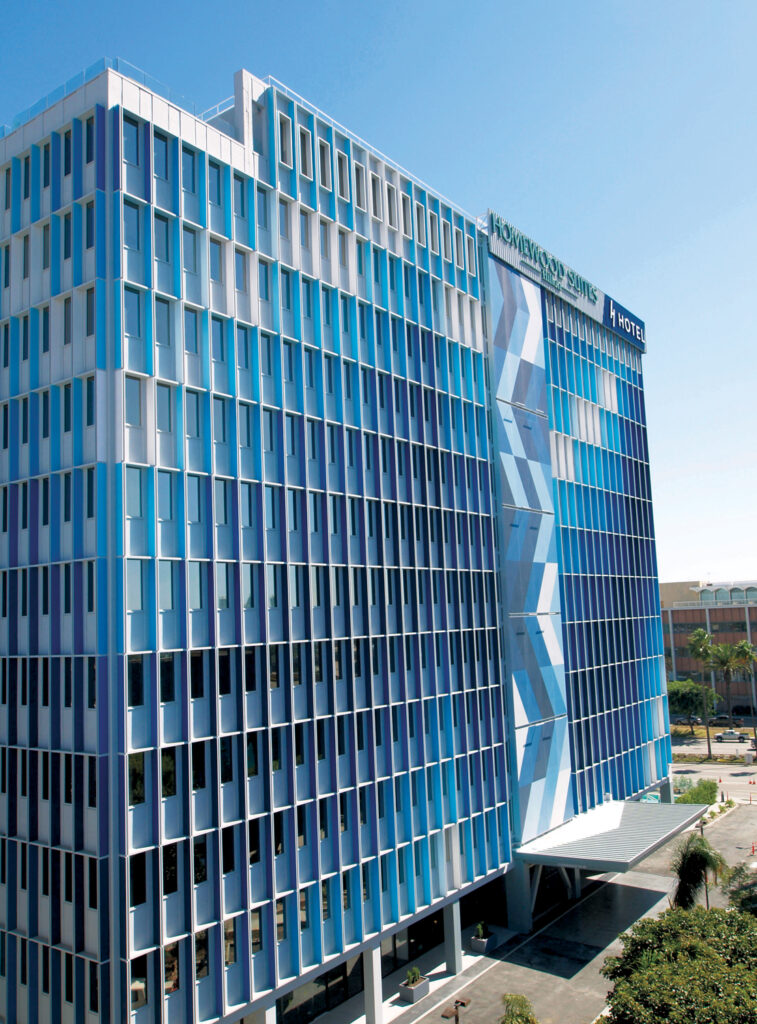
Being efficient and exact
One of the major developments in the printing industry is the use of UV local dimming control technology. Tony Simmering, product manager at Mutoh America Inc., says the technology, which has been integrated into the Phoenix-based company’s UV-LED XpertJet printers, offers several advantages.
“UV local dimming control technology enables precise application of CMYKW [full-color printing] plus varnish in one pass. This feature is made possible by a newly developed segmented UV lamp,” Simmering says. “The UV lamp has six different sections that can be individually controlled, allowing the production of multiple varnish effects such as gloss, semi-gloss and matte in the same pass. The result is a substantial increase in productivity and speed.”
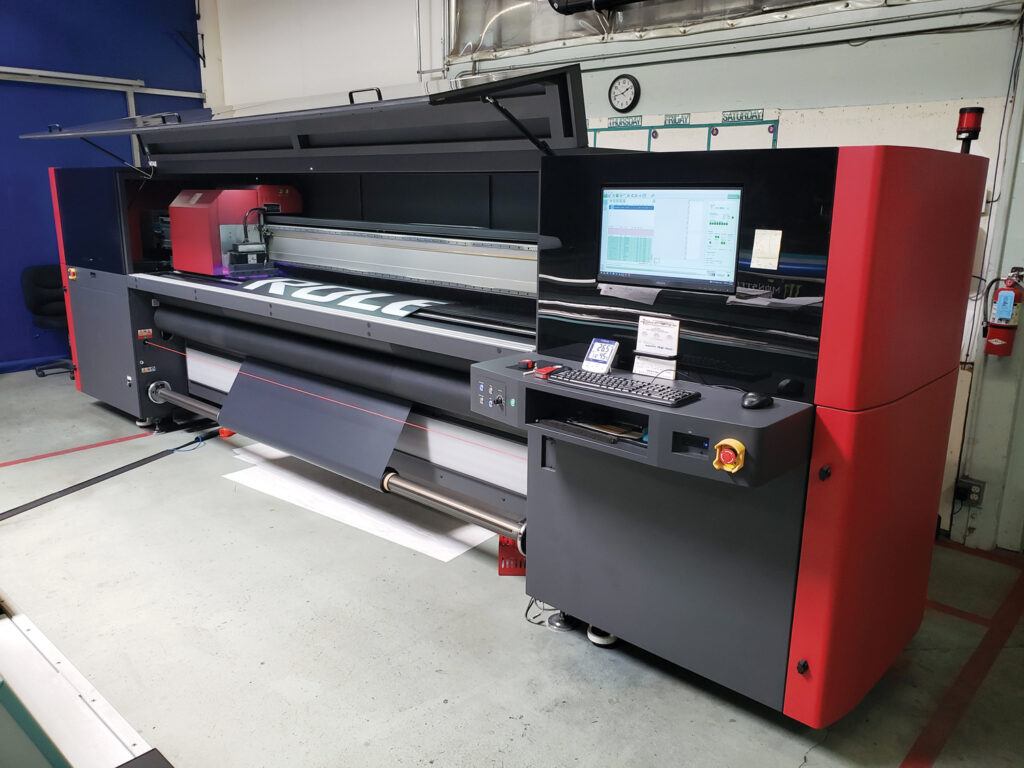
Another significant change in the print industry is the growth of digital printing, as opposed to methods using transfer paper. Simmering says this technology has several benefits.
“Printing digitally allows for the prepress operator or print device operator themselves to evaluate the conditions for printing, including things like resolution, scaling, color management and bleeds/finishing before sending a run and can even determine these items through soft-proofing capabilities that a RIP [raster imaging processor] software like Mutoh’s VerteLith™ can offer,” Simmering says. “All of these factors give the print service provider peace of mind that they can produce exact or near-exact quantities for their customers.”
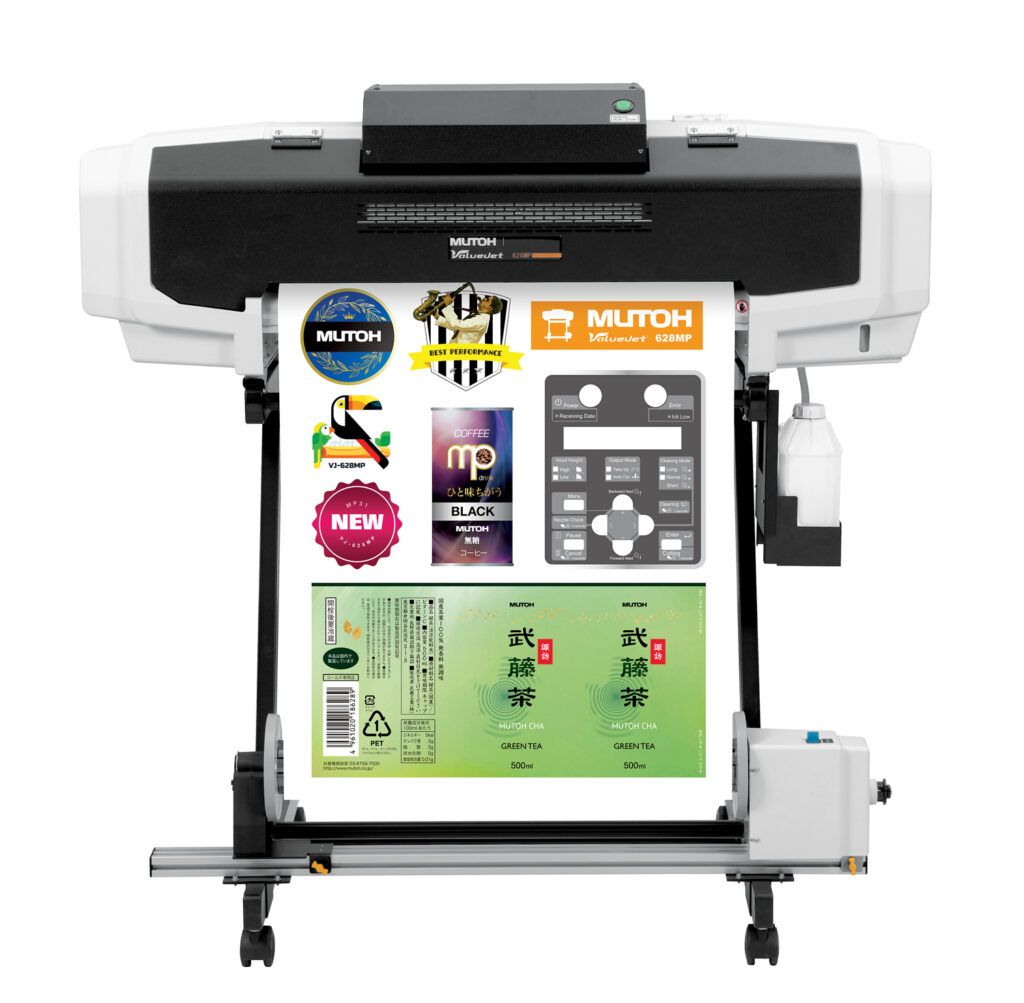
Simmering also notes the popularity of silicone edge graphics (SEG). “Creating signage with sustainable materials and processes is becoming extremely important as the focus is starting to center on applications like SEG utilizing zero-water-waste manufacturing for fabrics and aqueous inks,” he says. “Walk into nearly any hotel or airport—and increasingly retail space—and you will likely see SEG. SEG is also becoming paramount for trade-show signage where waste is historically extremely high.”
Another popular application Simmering mentions is direct to film (DTF), a printing process that allows for durability and stretch while opening up short runs on natural fibers or non-white garments.
An application that might be coming into its own is UV-LED ink technologies. “I think many people are starting to look at applications for UV-LED ink technologies that we traditionally thought of as impossible or impractical, namely UV-DTF and UV-printed vehicle graphics,” Simmering says.
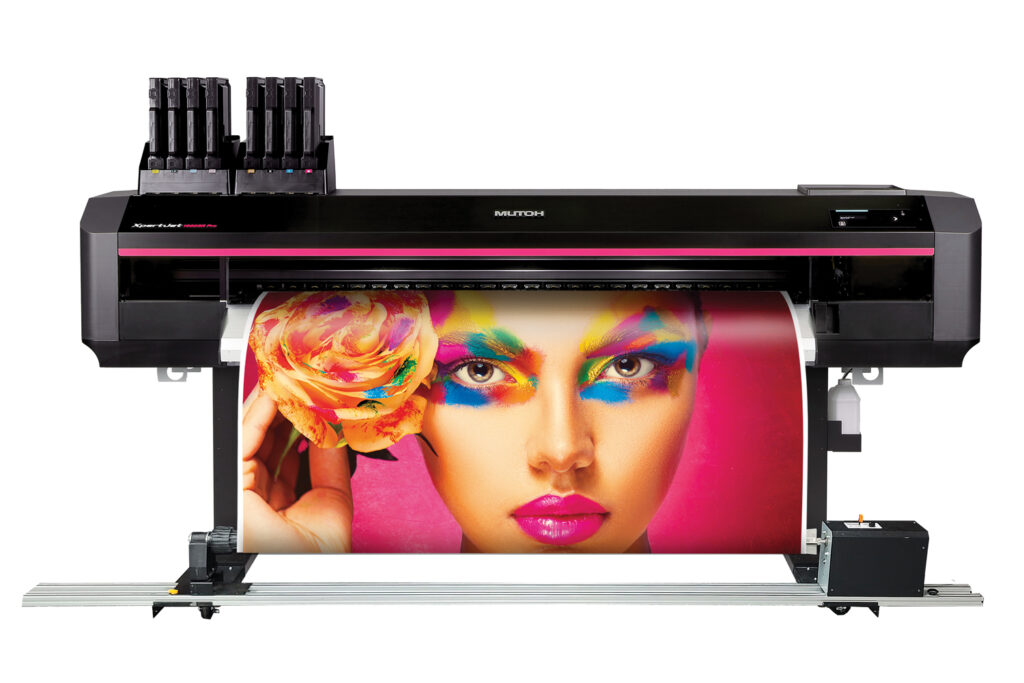
Mutoh has also made upgrades, including lowering the manufacturer’s suggested retail price on several key models, and has introduced new printers with different capabilities and features, such as an expanded color gamut, ADA-compliant braille, layered prints for fine textured art and automatic bidirectional alignments.
On the horizon, Simmering expects artificial intelligence to play an increasingly bigger role at Mutoh. “Things to look at are ‘print watchdogs,’ or allowing AI to find parts of a design, template or RIP setting that could be problematic and suggesting alternatives, minimizing potential waste,” he notes. “AI could also be used to optimize print job nesting and ordering for efficiency and control output across multi-printer systems for streamlined repeatability.”
And while AI is likely to play an increasingly larger role in the exterior fabric graphics industry in the future, it is clear that many companies aren’t just waiting for someday but advancing improvements now.
Alan Pierce is a freelance writer based in Minneapolis-St. Paul, Minn.
 TEXTILES.ORG
TEXTILES.ORG


